In the quieter corners of busy cities, nestled among historic facades and modern buildings, small mosaics often go unnoticed. For those who take the time to look, these pieces bear the signature of a single artist: Invader. The pixelated works, carefully designed and subtly placed, blur the lines between art, technology, and public space, forming a distinctive presence in 78 cities around the world.
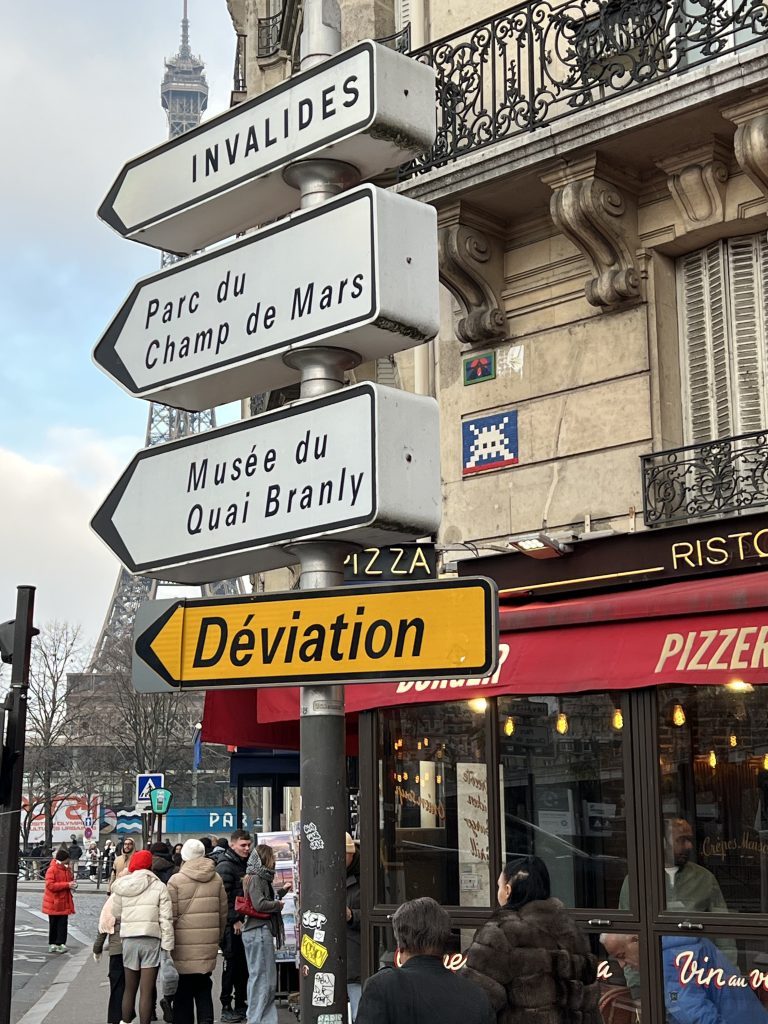
Invader by the Eiffel Tower/Bir Hakeim metro station. Photo: Fredrik Hagblom
The Origins of an Invasion
Born in 1969 and trained at the prestigious Beaux-Arts in Paris, Franck Slama, better known by his pseudonym Invader, began his artistic “invasion” in 1996. His mission was audacious yet simple: to liberate art from traditional institutions and bring it directly to the streets, where anyone could encounter it unexpectedly. Inspired by the pixelated graphics of retro video games like Space Invaders, Invader saw ceramic tiles as the perfect medium to bring these digital icons into the physical world.
Each piece is unique, from cartoon characters like Mario and the Smurfs to cultural figures such as Picasso and Mona Lisa. While some works nod to their surroundings—like a Dr. House mosaic near Pitié-Salpêtrière hospital—most playfully disregard context, emphasizing the surreal surprise of discovery.
The Process of a Global Art Movement
Invader’s approach is as strategic as it is artistic. Before an installation, he carefully scouts cities, identifying neuralgic points—busy intersections, historical landmarks, or quiet alleyways. This meticulous preparation, likened to urban acupuncture, ensures each mosaic resonates with its environment.
Using cement or innovative glues, the mosaics are affixed discreetly, often under cover of night. Some pieces are pre-assembled in his Paris studio, while others are created on-site, adapting to the time and space constraints of the installation. Despite the legal gray areas of his work, Invader has cultivated an almost mythical reputation, with some property owners even welcoming his additions.
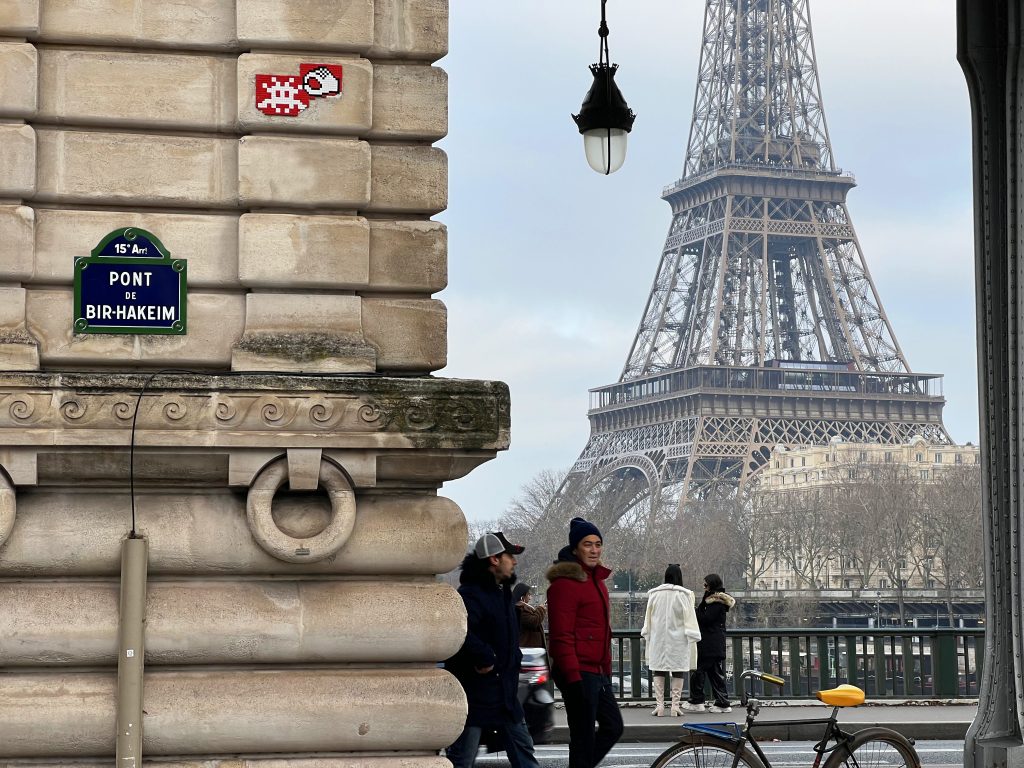
Invader at the Bir Hakeim bridge. Photo: Fredrik Hagblom
Beyond the Streets: Art as Experience
For Invader, his mosaics are more than static artworks; they are fragments of a larger, participatory project. The “Flash Invaders” app transforms his street art into an interactive game. Users can photograph and “flash” the mosaics to earn points, with scores varying based on the size, location, and rarity of the piece. Paris, his home base, boasts over 1,400 works, while other cities like New York and Tokyo contribute to a global tally of nearly 4,000 mosaics.
The app, resembling a blend of art appreciation and Pokémon Go, invites people to explore their surroundings with fresh eyes. Families and adventurers alike can find joy in tracking down these urban treasures, turning city streets into open-air galleries.
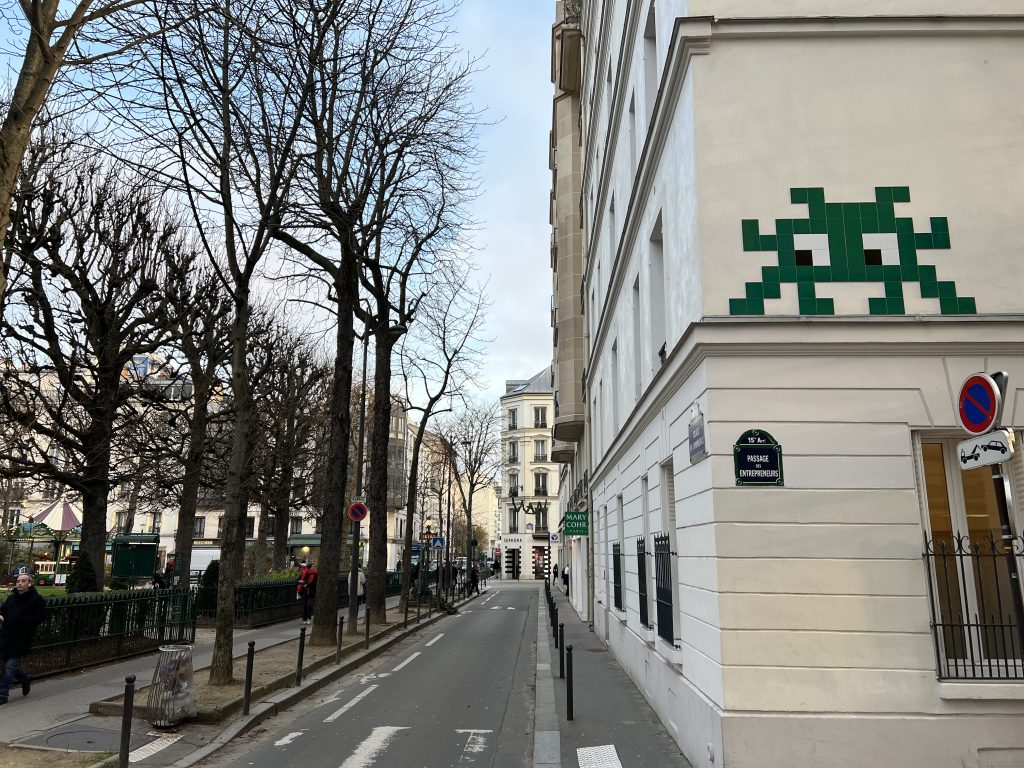
Invader at Place du Commerce, Paris. Photo: Fredrik Hagblom
The Subtle Politics of Art
While Invader insists his work carries no overt political message, the act of installing unauthorized art on public and private property is inherently subversive. “I am into artistic experimentation rather than political opposition,” he explains. His mosaics disrupt the monotony of urban landscapes, encouraging passersby to pause, look, and wonder.
Even so, challenges persist. Some mosaics have been removed or destroyed, often by individuals attempting to sell replicas. Yet, Invader’s database meticulously archives each piece, preserving their memory even when they vanish from the streets.
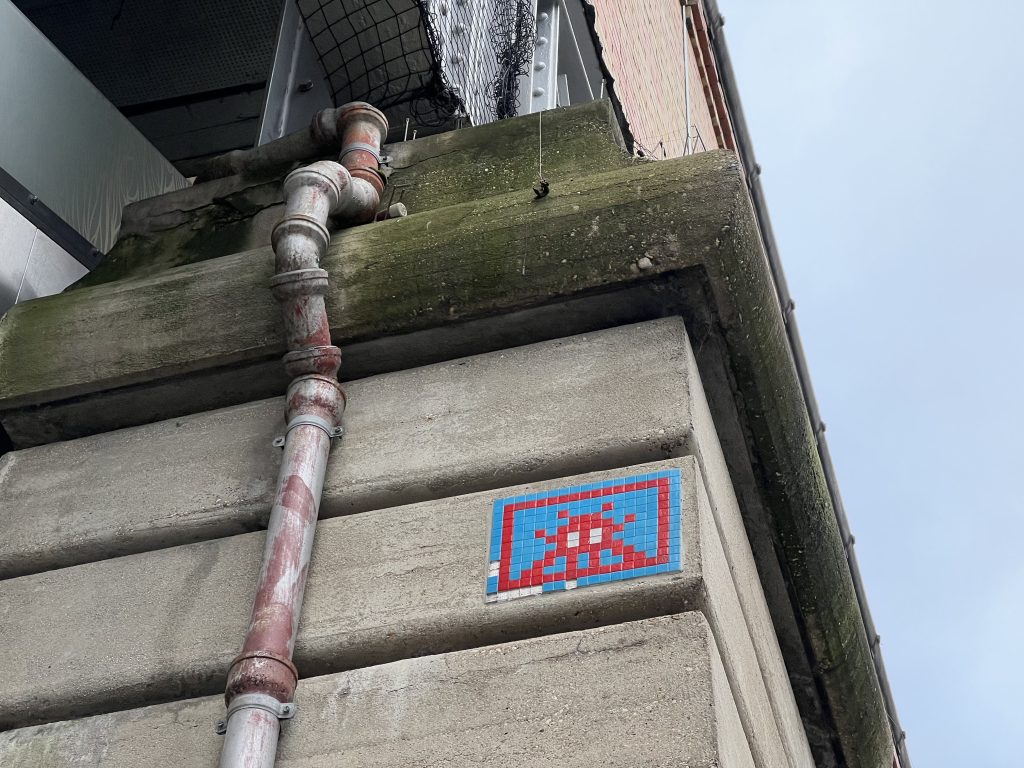
Invader on the sky train bridge by Place du Dupleix, Paris. Photo: Fredrik Hagblom
Expanding the Universe
Though mosaics are Invader’s primary medium, his creativity knows no bounds. He has ventured into Rubik’s Cube art, sculptures, books, and even culinary experiments like waffle makers shaped like his iconic aliens. Notably, his reach extends to extraordinary heights—literally. A mosaic named Space2 was installed aboard the International Space Station in 2015, while two others rest beneath the waves in Cancun Bay, visible only to scuba divers.
Meanwhile, his works have gained significant traction in the art market. Limited-edition invasion kits and mosaics fetch impressive sums at auction, with pieces like Vienna commanding €280,000. Despite this commercial success, Invader remains grounded in his passion for street art, continuing to create new works weekly.
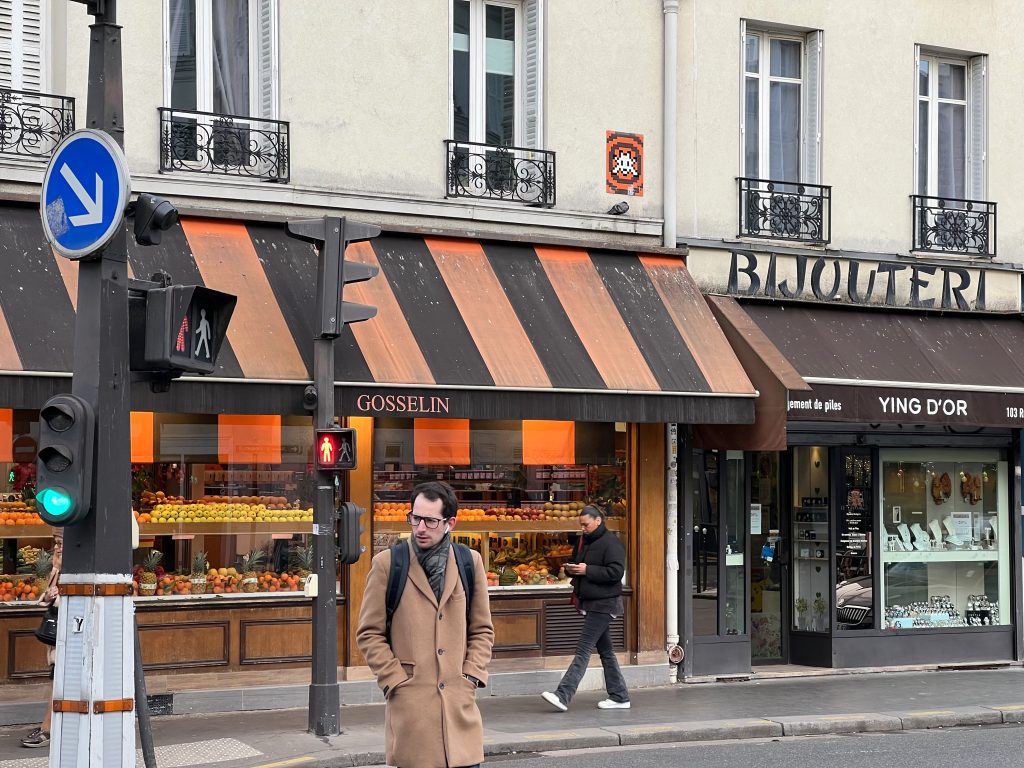
Invader by Rue du Commerce, Paris. Photo:Fredrik Hagblom
Discovering Invader’s Paris
In Paris, where Invader’s journey began, his mosaics are omnipresent—on the walls of Montmartre, hidden near the Picasso Museum, or blending into the grandeur of the Opera Garnier. A guided tour through the Marais reveals not only his works but also the historical and cultural layers they inhabit. For those eager to join the hunt, the Flash Invaders app provides a modern twist, transforming exploration into a game that connects art, technology, and the joy of discovery.
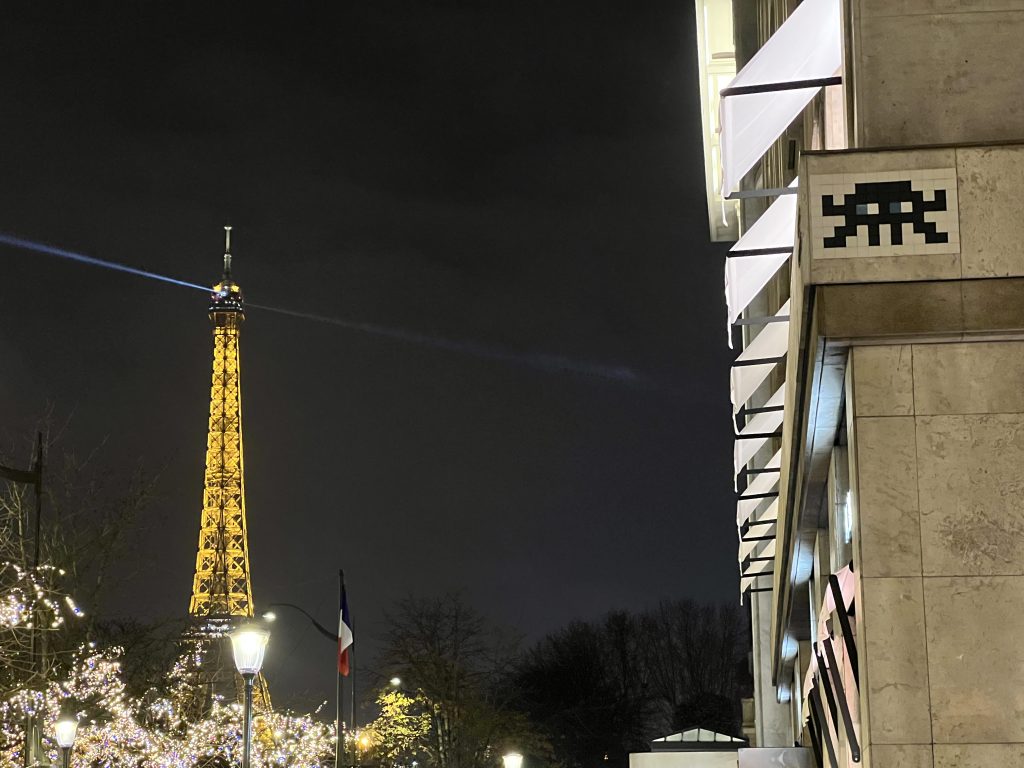
A “night invader” in the 7th arrondissement of Paris. Photo: Fredrik Hagblom
The Legacy of a Free Artist
“I define myself as an UFA, an Unidentified Free Artist,” Invader once said. This self-assigned title captures the essence of his work—boundless, unclaimed, and utterly original. Through his mosaics, Invader has carved a space where nostalgia for digital icons meets the tangible reality of our cities. His art invites us to look closer, to embrace curiosity, and to find beauty in unexpected places.
In a world increasingly dominated by screens, Invader’s creations remind us to lift our eyes and reconnect with the spaces we inhabit. Somewhere in the mosaic of his work lies not just an artistic statement but an invitation: to see our cities, and ourselves, anew.
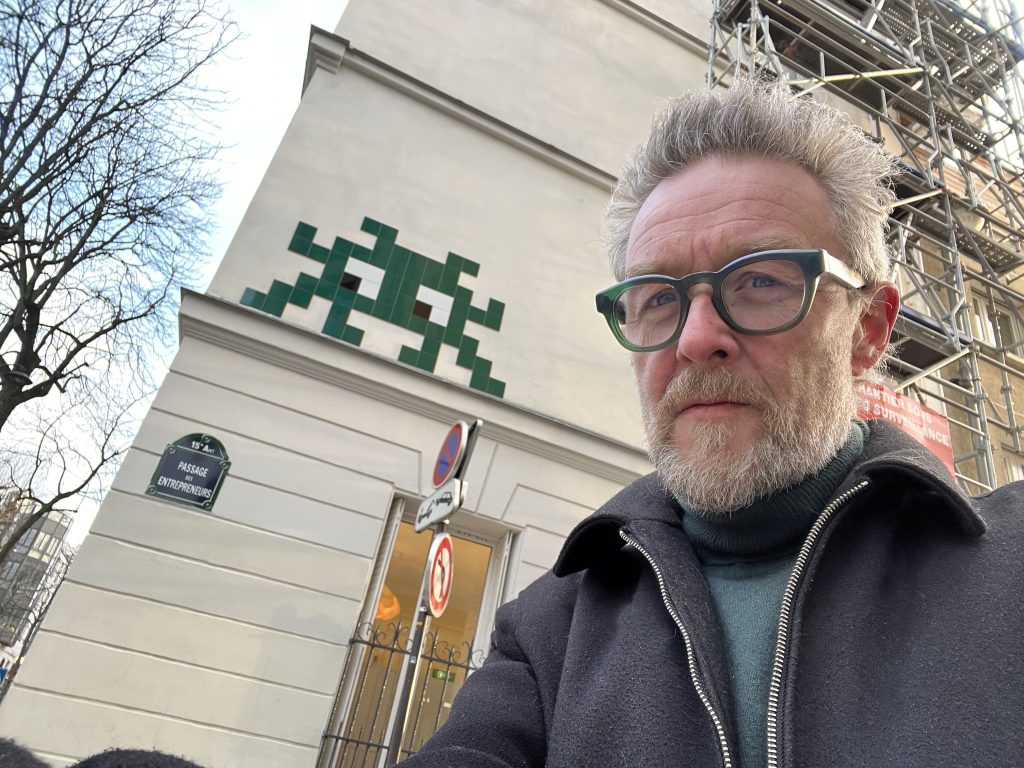
Yours truly in matching glasses at the invader by Passage des Entrepreneurs.
Location map of Invaders in Paris
Related reading
The AfterSquat: 59 Rue de Rivoli, Paris – A Living Canvas of Art and History
